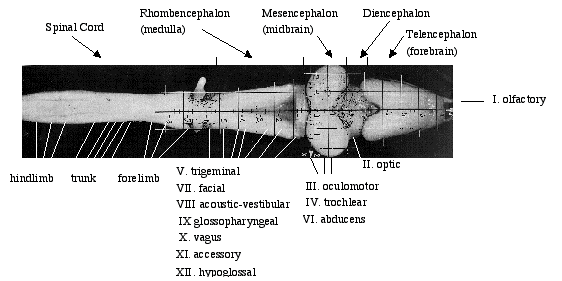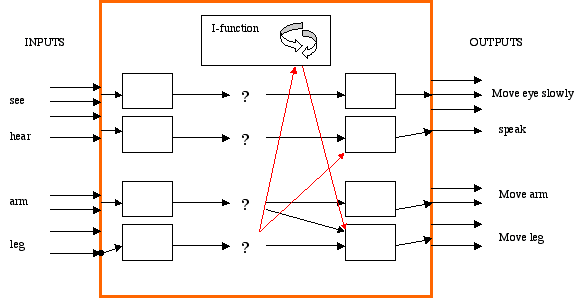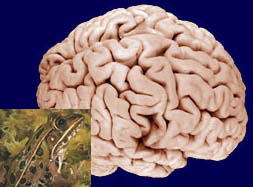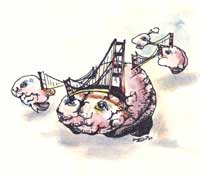Neurons and How They Work: Potentials, Chemicals. Time, Inhibition
Recapitulation:
Significance of interconnections - topographic organization of sensory, motor neurons - patterns of activity

Significance of interconnections - locating/acknowleding the distinct "I-function"

It is beginning to make sense, that the rest of the nervous system is what the neocortex depends on for learning. I see it most clearly when I think of lessons that are hands on and how much more and more clearly students remember the information and more importantly, the experiences they are having ... Julie
This discussion gives me the terminology to describe why lab experience is such an important part of a science program ... After this morning's discussion, I realized that these experiences "teach" to the unconscious nervous system ... Susan
Elementary students are generally in environments where they can experience learning ultilizing both the concious and unconcius. When students reach high school there seems to be an unwritten rule that is not necessary to tap the unconcious ... Sherry
As a child then, what can we do to help them learn through their unconscious mind? ... Wackomin
Paralyzed Man Uses Thoughts to Move a Cursor
Paralyzed Leech Uses Action Potentials to Swim
Action = patterns of activity in motoneurons; thought = patterns of activity in interneurons (neocortex?); what is "activity"? where do patterns come from?
Moving on: Neurons
Potentials
Neuron as integrator with autonomy
Equivilence of signals
Inhibition, "thinking backwards"
Time delays in, among other things, "thinking"
Awareness of reality dependent on sensory transducers
General chemical influences
Key points re behavior:
- Neurons can be spontaneously active and "noisy"
The nervous system can generate output without input, and may be somewhat unpredictable
- Neurons are sensitive to chemicals
Ingested materials can function as inputs to the nervous system
- Neurons and neuronal signalling can be altered by use in a variety of ways
The nervous system is constantly changing
- Signals are pretty much the same in all neurons
Inputs, outputs, and everything in between are "patterns of activity"
- Signal processing involves inhibition as much as excitation
Think about allowing or discouraging things from happening as much as causing or failing to cause them.
- Neurons are responsive only to signals for which they have receptors
Our picture of "reality" is always incomplete
- Neurons enact choices but don't experience "choosing"
"Choosing" must be a property resulting from asseblies of neurons (architecture)
In what ways does knowing something about neurons cause you to think differently about behavior? about education? Write thoughts in Institute Forum Area
| Institute Forum
| Brain and Behavior Institute 2006
| Summer Institutes
| Serendip Home |
Send us your comments at Serendip

© by Serendip 1994-
- Last Modified:
Wednesday, 02-May-2018 10:51:15 CDT





